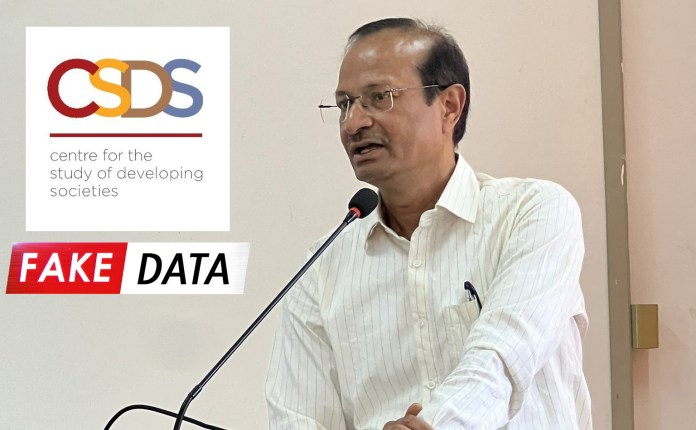Authorities in Maharashtra have filed two FIRs against senior psephologist Sanjay Kumar of the Centre for the Study of Developing Societies (CSDS) after he posted wrong information about voter numbers on social media. The Congress party had used the fake data to attack the Election Commission of India as part of its ongoing assault on the world’s largest election machinery.
According to media reports, one case was registered in Nagpur on the complaint of the Ramtek tehsildar, and another in Nashik by the district election officer. Both FIRs mention that the false data had the potential to mislead people during the 2024 Lok Sabha and Maharashtra Assembly elections.
Kumar has been booked under several provisions of the Bharatiya Nyay Sanhita, such as 175 (false statement about an election), 353(1)(B) (statements inducing public mischief), 212 (furnishing false information to a public official), and 340.
Nagpur Police have registered an FIR against Sanjay Kumar, an official from the Centre for the Study of Developing Societies (CSDS), following controversial social media posts related to Maharashtra elections. The FIR has been filed under multiple sections of the BNS, including… pic.twitter.com/FY1m0fYXoq
— ANI (@ANI) August 20, 2025
The Election Commission (EC) has issued a stern warning that any move to circulate unverified figures will be taken seriously and addressed with legal measures. The EC has also cautioned voters and political parties to use only the official EC portal for credible information and not believe or post unverified figures.
Background: How the fake data fiasco unfolded
The row started on 18th August, when Congress spokesperson Pawan Khera posted a graphic on X (formerly Twitter), showing huge discrepancies in the 2024 Lok Sabha and Maharashtra Assembly voter rolls.
He quoted Sanjay Kumar and Lokniti-CSDS data to say that constituencies such as Ramtek and Deolali saw their electorate dwindle by almost 40% in six months, whereas Nashik West and Hingna recorded unusually high jumps of more than 40%.
A day earlier, on 17th August, Sanjay Kumar himself had posted numbers suggesting bizarre jumps in the Nashik West and Hingna constituencies, claiming a 47% and 42% increase in voters, respectively. His figures quickly spread across social media and were picked up by opposition leaders to attack the credibility of the Election Commission.
But within 48 hours, on 19th August, Kumar deleted his post and issued a public apology. He admitted that the data was wrong, blaming his ‘data team’ for misreading rows in the datasets. He clarified that there was ‘no intent to spread misinformation,’ but the figures had already circulated widely, adding to political tensions.
Later, Opindia fact-check confirmed based on official Election Commission numbers showed that Kumar’s claims were grossly inflated. For instance, Nashik West saw a modest 6% rise in voters (around 27,400 people), not the huge jump of 1.5 lakh that Kumar had claimed. Similarly, Hingna’s rise was just over 25,000 voters, not the 43% surge he reported.
On 19th August, the Indian Council of Social Science Research (ICSSR), a body under the Ministry of Education which funds the Centre for the Study of Developing Societies (CSDS), strongly criticised the fake data fiasco. ICSSR said that Kumar’s false claims on Maharashtra’s electoral rolls and their subsequent amplification against the Election Commission of India (ECI) amounted to a “gross violation of the Grant-in-Aid rules”. The council announced that a show cause notice would be issued to CSDS for its conduct.

